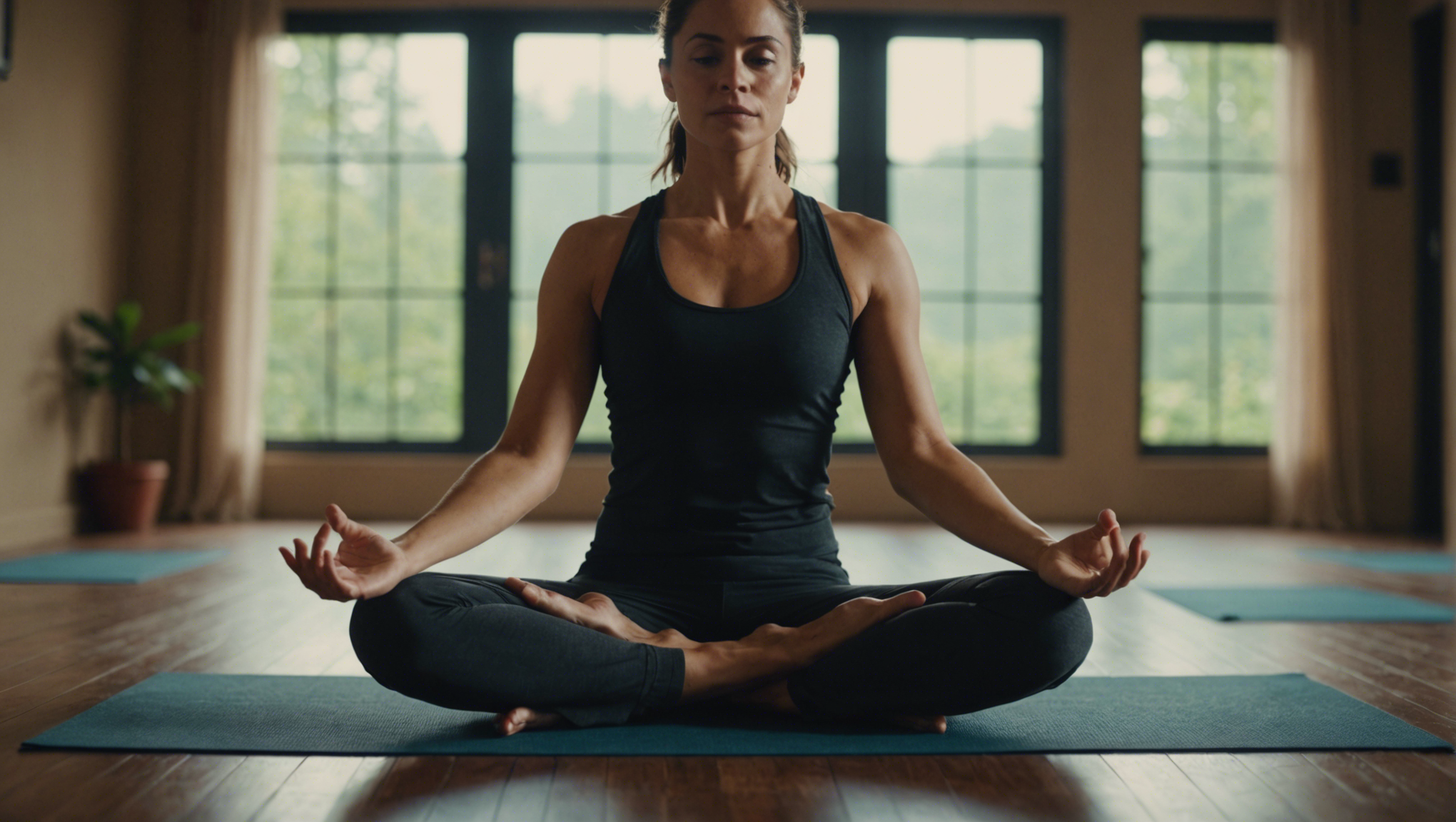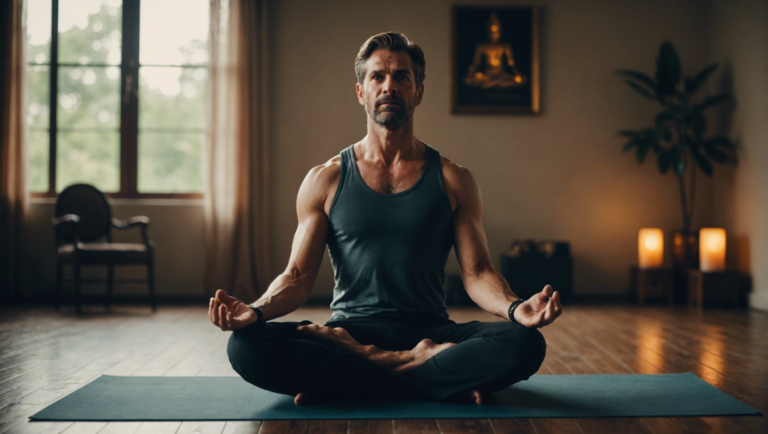Discovering The Total Count: How Many Yoga Asanas Are There?
The Intricacies of Counting Yoga Asanas: A Deep Dive into Numbers
Yoga, an ancient practice rooted in over 5,000 years of Indian traditions, has evolved into a global phenomenon recognized for its significant benefits to physical health, mental peace, and spiritual growth. The complexity and richness of yoga lie in its diverse asanas (postures) and philosophies. However, one question that frequently emerges in the world of yoga is about the sheer number of asanas practiced today. This exploration provides a detailed dive into the layers that constitute the counting of yoga asanas, emphasizing the depth and breadth of this ancient practice.
Unraveling the Count: A Historical Perspective
Yoga’s history is deeply intertwined with the spiritual and philosophical teachings of ancient India. Initially, yoga was more focused on meditation and the mastery of the mind rather than physical postures. The earliest reference to asanas comes from the sage Patanjali, in the Yoga Sutras, a text that dates back to the first few centuries CE. Patanjali describes yoga as an eight-limbed path (Ashtanga), with asanas being just one of these limbs. Interestingly, Patanjali only mentions a handful of sitting postures dedicated to meditation practices.
As yoga evolved, so did the practices associated with it. By the time the Hatha Yoga Pradipika was composed in the 15th century CE, approximately 15 asanas were described, signaling a shift towards the incorporation of more physical postures. This was a pivotal moment in yoga history, marking the beginning of Hatha Yoga’s rise to prominence.
The Exponential Growth of Yoga Asanas
The transformation of yoga from a predominantly meditative practice to one emphasizing physicality has led to an explosion in the number of asanas. Modern yoga practices, influenced by global exchanges and the advent of yoga as a worldwide fitness trend, have expanded the repertoire of asanas significantly. Today, it’s estimated that there are thousands of yoga poses, each with variations and adaptations to suit different skill levels, physical limitations, and teaching styles.
This expansion can be attributed to several factors, including the creativity and innovation of yoga practitioners and teachers over the years. As yoga reached Western shores, the emphasis on the physical aspect of yoga became more pronounced, leading to the development of new poses and the adaptation of traditional asanas to make them more accessible or challenging.
The Significance of Asana Counts
While it may be enticing to pinpoint an exact number of yoga asanas, such an endeavor overlooks the essence of yoga as a dynamic and evolving tradition. The diversity of yoga practices worldwide means that the asanas differ from one tradition to another, influenced by cultural interpretations and individual teacher’s innovations.
More importantly, the focus in yoga is less on the quantity of asanas and more on the quality of practice. Each asana serves a specific purpose, from strengthening the body to promoting inner peace. The richness of a yoga practice comes not from mastering a vast number of poses but from deeply understanding and integrating the lessons of each posture into one’s practice and life.
Embracing the Fluidity of Yoga
In the journey through the numbers, it becomes evident that the spirit of yoga transcends the confines of a definitive count. The beauty of yoga lies in its adaptability and inclusivity, allowing each individual to explore the asanas that resonate with their personal journey.
The continuous growth and adaptation of yoga reflect its enduring relevance and the universal appeal of its core principles of balance, harmony, and self-discovery. As yoga continues to evolve, so too will the asanas, each adjustment and new posture contributing to the rich tapestry of this ancient art.
The Path Forward: Personal Exploration and Growth
Rather than focusing solely on the number of asanas, practitioners are encouraged to delve into the nuances of each posture, embracing the learning process as an ongoing journey of exploration. The true essence of yoga lies in the personal transformation it fosters, a journey that is unique for every individual.
In embracing the fluidity and expansiveness of yoga, one discovers not just the diversity of its asanas but the depth of its capacity to heal, strengthen, and enlighten. The intricacies of counting yoga asanas thus reveal not only the vastness of the practice but also the infinite possibilities for personal growth and transformation that lie within.
The Evolution of Yoga: From Ancient Traditions to Modern Practices
Yoga, an ancient practice with roots dating back thousands of years in India, has evolved significantly as it spread across the globe. This profound journey from ancient traditions to modern practices illustrates not only the adaptability and resilience of yoga but also reflects the changing needs and cultures of its practitioners. Today, yoga is recognized both as a form of spiritual practice and a physical exercise, offering a diverse range of styles and interpretations that cater to various preferences and objectives.
Ancient Origins and Philosophical Foundations
The genesis of yoga is enshrined in the ancient Sanskrit texts of India, notably the Vedas, the Upanishads, and the Bhagavad Gita. Originally, yoga was a meditative practice aimed at transcending the physical realm and achieving spiritual enlightenment. Its philosophical foundations are deeply rooted in the pursuit of inner peace, self-realization, and the unity of the individual soul with the universal consciousness.
The classical text, the Yoga Sutras of Patanjali, penned circa the 2nd century BCE, systematized yoga into an eight-limbed path (Ashtanga Yoga), outlining steps including moral principles (Yamas and Niyamas), physical postures (Asanas), breath control (Pranayama), sensory withdrawal (Pratyahara), concentration (Dharana), meditation (Dhyana), and ultimately, samadhi, or a state of ecstatic absorption.
Transition to the Physical
As yoga traversed through centuries and crossed geographical boundaries, its emphasis gradually shifted towards the physical aspects. This transformation became particularly pronounced in the 20th century when yoga masters began to propagate their teachings globally. The physical dimension of yoga, with its postures and breath control techniques, started to gain prominence, making it accessible and appealing to a broader audience seeking health and fitness benefits.
Fusion and Innovation: The Influx of Modern Practices
The modern yoga landscape is marked by a fusion of traditional elements with contemporary insights and innovations. This has led to the emergence of various yoga styles, each with its own unique focus, technique, and philosophy. Popular styles include Hatha, Vinyasa, Ashtanga, Iyengar, Kundalini, and Bikram yoga, among others.
Moreover, contemporary practices have introduced yoga to settings beyond the traditional studio or ashram, integrating it into fitness centers, schools, and online platforms. Additionally, yoga therapy has gained recognition for its potential to support healing and wellness, blending age-old practices with modern healthcare approaches.
Yoga and Mindfulness: A Holistic Approach to Well-being
In recent years, the concept of mindfulness has become intricately tied to yoga, emphasizing present-moment awareness and a holistic approach to health. This integration underscores the mental and emotional benefits of yoga, contributing to its popularity as a comprehensive practice for well-being.
Through mindfulness, practitioners experience a deepening of the inner journey that yoga promises, fostering a sense of peace, balance, and well-being that transcends the physical benefits of the postures.
Global Community and Cultural Exchange
The evolution of yoga has fostered a vibrant global community bound by a shared interest in personal and spiritual growth. This international network facilitates cultural exchange, enriching the practice with diverse perspectives and insights.
As yoga continues to evolve, it remains open to new influences and interpretations, reflecting the dynamic nature of human culture and spirituality. Its journey from the mystic ashrams of ancient India to the bustling yoga studios of today’s cities is a testament to its universal appeal and timeless relevance.
Embracing the Future While Honoring the Past
As we look to the future of yoga, it is crucial to approach its evolution with respect for its roots and openness to innovation. Balancing tradition with adaptation enables yoga to remain relevant and valuable for contemporary seekers of health, happiness, and spiritual fulfillment.
The journey of yoga from ancient traditions to modern practices encapsulates a rich history of spiritual exploration, physical development, and cultural adaptation. It stands as a profound example of humanity’s quest for understanding, wellness, and connection, promising to continue evolving with each generation that embraces its timeless wisdom.
The Role of Asanas in Yoga Philosophy and Wellness
Unveiling the Essence of Asanas in Yogic Tradition
Yoga, a practice deeply rooted in ancient Indian philosophy, extends far beyond the physical postures and breath control that most are familiar with today. At its core, the philosophy of yoga is a profound exploration of the human spirit and its connection to the universe. Among the diverse practices within yoga, asanas or physical postures, play a pivotal role, serving not only as exercises for physical wellness but as essential tools for achieving mental clarity, emotional balance, and spiritual awakening.
Asanas: Beyond Physical Flexibility and Strength
The practice of asanas is often mistakenly limited to its physical benefits, including increased flexibility, strength, and balance. While these are significant, the true value of asanas lies in their capability to harmonize the body, mind, and spirit. Each posture is designed to open specific channels within the body, enabling the free flow of prana, or life energy, thereby promoting healing and vitality.
Integration of Mind and Body through Asanas
One of the most beautiful aspects of asana practice is its capacity to bring the mind into a state of deep focus and tranquility. By concentrating on maintaining a pose and synchronizing breath with movements, practitioners can achieve a meditative state, where mental chatter ceases, and a profound sense of presence is experienced. This mental discipline is crucial not only for the advancement in physical postures but for cultivating an inner sanctuary of peace that extends into everyday life.
Asanas and the Journey Toward Self-Discovery
Yoga philosophizes the concept of self-discovery and self-mastery, and asanas are one of the tools through which individuals embark on this inward journey. By pushing the physical limits, confronting discomfort, and practicing patience and persistence, yoga practitioners develop resilience, self-awareness, and a deeper understanding of their bodies and minds. This process of exploration and confrontation with one’s own limits and potentialities fosters a profound transformation that is as much internal as it is external.
The Healing Power of Asanas
Beyond the spiritual and mental implications, asanas hold significant therapeutic value. Modern research supports yoga’s effectiveness in managing and alleviating various health conditions, from chronic pain and heart disease to anxiety and depression. The mindful practice of yoga postures, combined with controlled breathing, can enhance physiological functions, boost the immune system, and promote emotional equilibrium. This holistic approach to wellness emphasizes yoga’s capacity not only to heal but also to prevent disease.
Nurturing Wellness through Daily Practice
Yoga asanas into daily life can be profoundly transformative. It encourages a lifestyle that values mindfulness, discipline, and self-care. Even a short daily practice can yield remarkable benefits for body and mind, fostering a sense of well-being that permeates all aspects of life. The key is consistency and a mindful approach to practice, where the journey itself becomes the destination, and each posture a step toward greater health and consciousness.
The Shift to a Higher Consciousness
Ultimately, the practice of asanas within the broader context of yoga philosophy encourages a shift in consciousness. From recognition of the interconnectedness of all life to a deep appreciation for the present moment, yoga offers a pathway to a more fulfilling and meaningful existence. It teaches the art of living with awareness, compassion, and gratitude, thereby enriching not just the individual’s life but also contributing to the wellbeing of the community and the world at large.
In exploring the multifaceted role of asanas in yoga philosophy and wellness, it becomes clear that they are much more than mere exercise. They are a medium through which individuals can attain physical health, mental clarity, emotional balance, and spiritual enlightenment. As such, the practice of asanas is not an end in itself but a means to navigate the journey of life with grace, strength, and wisdom.
Breaking Down the Major Categories of Yoga Asanas
Yoga, an ancient practice that has transcended thousands of years, offers more than just a physical workout; it is a journey of holistic well-being, intertwining the mental, emotional, and spiritual aspects of human existence. The art and science of Yoga are unfolded through its asanas (postures), each category designed to enhance the practitioner’s journey towards balance and enlightenment. Diving into the major categories of these asanas reveals a fascinating blend of strength, flexibility, and tranquility, much like the distinctive layers of human consciousness.
Understanding the Essence of Standing Asanas
Standing asanas are the foundation of any yoga practice. They are crucial for building strength, stability, and a sense of groundedness. These postures work on various muscle groups and prepare the body for more complex asanas. Standing poses like Tadasana (Mountain Pose) and Trikonasana (Triangle Pose) not only improve posture but also increase stamina, which is essential for maintaining poses for longer durations. These asanas are often recommended for beginners to cultivate an understanding of balance and bodily alignment.
Exploring the World of Sitting Asanas
Sitting asanas, on the other hand, are predominantly focused on enhancing flexibility and stimulating the pelvic and abdominal organs. These poses, such as Padmasana (Lotus Pose) and Paschimottanasana (Seated Forward Bend), encourage a deep introspection and calming of the mind, making them ideal for meditation and breathwork practices. The seated postures play a vital role in promoting digestive health, alleviating stress, and preparing the body and mind for meditation and relaxation.
The Dynamic Realm of Inversion Asanas
Inversion asanas, such as Sirsasana (Headstand) and Sarvangasana (Shoulder Stand), are often considered the crown jewels of yoga practice. By reversing the flow of gravity, these poses revitalize the whole body, enhance mental function, and aid in lymphatic drainage. Inversions are known for their ability to alleviate stress, improve circulation, and boost the immune system. Although challenging, they bring a sense of achievement and exhilaration to the practitioner, embodying the transformative power of yoga.
The Balancing Act of Arm Balances
Arm balances require a blend of strength, concentration, and technique. Poses like Bakasana (Crane Pose) and Adho Mukha Vrksasana (Handstand) exemplify the intricate balance and muscular engagement needed to achieve and maintain these asanas. Practicing arm balances cultivates a sense of empowerment and courage, encouraging practitioners to face their fears and embrace a sense of playfulness in their practice.
The Integrative Approach of Backbends
Backbends are exhilarating asanas that open up the chest, shoulders, and spine, counteracting the modern-day plague of hunching over screens. Ustrasana (Camel Pose) and Bhujangasana (Cobra Pose) invigorate the body, improve spinal flexibility, and stimulate the nervous system. Backbends are known for their ability to energize the practitioner, releasing tension and promoting an open, receptive state of being.
The Soothing Touch of Forward Bends
Forward bends, such as Uttanasana (Standing Forward Fold) and Janu Sirsasana (Head-to-Knee Forward Bend), invite a sense of surrender and introspection. These poses cool the body and calm the mind, making them perfect for winding down after a vigorous practice or for cultivating a state of inner peace. Forward bends are therapeutic, aiding in the relief of anxiety, fatigue, and insomnia.
The meticulously designed categories of yoga asanas cater to the diverse needs and stages of a practitioner’s journey. Each category holds the potential to transform and enrich the physical, mental, and emotional dimensions of life. Engaging with these postures not only enhances bodily health but also fosters a deeper connection with the self and the surrounding world, embodying the true essence of yoga. Through consistent practice, individuals can navigate the realms of their existence with greater ease, resilience, and grace, ultimately achieving a state of harmonious balance.
The Future of Yoga: Trends, Innovations, and Expanding Asana Libraries
In the ever-evolving world of yoga, understanding the latest trends, innovations, and the expanding asana libraries becomes crucial for practitioners and instructors alike. The transformative journey of yoga, from its ancient roots to the modern digital age, reveals a discipline that is not only surviving but thriving, adapting to the needs and interests of contemporary society.
The Rise of Virtual Yoga Platforms
One cannot discuss the advancement of yoga without acknowledging the pivotal role technology plays. Virtual yoga platforms have revolutionized the way we practice, breaking down geographical barriers and making yoga accessible to a global audience. These platforms offer a plethora of classes catering to all levels and styles, from Vinyasa to Yin, led by experienced instructors from around the world. The convenience and variety they provide have attracted many who might have otherwise felt intimidated by traditional studio settings.
A Dive into Specialty Yoga Practices
As yoga continues to penetrate mainstream culture, we witness a surge in specialty practices that cater to diverse interests and needs. Yoga styles such as Aerial Yoga, combining traditional asanas with aerial arts, and AcroYoga, blending yoga and acrobatics, demonstrate the innovative fusion of disciplines. Similarly, Yoga Therapy emerges as a significant trend, where tailored asana sequences aim to address specific health issues, showcasing yoga’s capacity for personalization and its potential as a complementary health approach.
The Advent of Wearable Yoga Technology
Wearable technology has stepped into the yoga arena, offering tools that enhance the practice through real-time feedback on posture and breathing. Devices and applications designed specifically for yoga practitioners help in fine-tuning alignment, tracking progress, and even guiding meditation sessions. This integration of technology into personal practice underscores a broader trend towards data-driven approaches to wellness and fitness.
Expanding Asana Libraries: Pushing Physical and Creative Boundaries
Yoga asanas, the physical postures of yoga, are experiencing their own evolution. Historically rooted in a limited set of traditional poses, modern asana practice embraces innovation, inclusivity, and adaptation. New asanas and variations are continually being developed, inspired by a deeper understanding of human anatomy and a creative approach to movement. These expanding libraries not only challenge practitioners physically but also invite exploration into the nuances of body and mind.
Yoga and Environmental Consciousness
The intertwining of yoga with environmental consciousness marks a notable trend. Yoga retreats and studios increasingly adopt eco-friendly practices, from sustainable building materials to zero-waste policies. Moreover, the concept of "Green Yoga," which emphasizes the connection between yoga practice and environmental activism, encourages practitioners to extend their mindfulness beyond the mat and into their interactions with the natural world.
Future Prospects: The Integration of Yoga in Healthcare
Looking ahead, the integration of yoga into healthcare settings presents a promising frontier. Scientific research validating the health benefits of yoga paves the way for its inclusion in preventive and therapeutic health programs. This recognition not only amplifies yoga’s credibility but also broadens its reach, offering a holistic approach to health that complements conventional medical treatments.
The future of yoga unfolds with exciting possibilities. Innovations in technology, the expansion of asana libraries, and yoga’s increasing incorporation into health and environmental initiatives reflect its dynamic nature. As it continues to adapt and evolve, yoga remains a beacon of resilience, innovation, and holistic well-being, poised to enrich lives for generations to come.
Conclusion
Venturing into the realm of yoga asanas unveils a journey that stretches beyond physical postures, reaching into the essence of historical traditions and the evolving nature of modern practices. The endeavor to quantify the total count of yoga asanas is not merely an exercise in numerics but a profound exploration of yoga’s depth and diversity. As we delved deep into the intricacies of counting yoga asanas, it became evident that numbers barely scratch the surface of the art’s vastness. This complexity is compounded by the evolutionary journey of yoga, transitioning from ancient rituals to a cornerstone of contemporary wellness culture, further shaping the landscape of yoga asanas.
Understanding the evolution of yoga from its roots in ancient traditions to its status as a global phenomenon today highlights the dynamic adaptability of this practice. It’s a narrative that emphasizes not just the preservation of traditional asanas but also the introduction of new postures responding to modern needs and insights. This evolution is reflective of yoga’s inherent capacity to balance respect for its historical essence with an openness to innovation and growth. As we trace the trajectory from the foundational texts to the digital age’s virtual yoga studios, it becomes clear that yoga is a living tradition, ever-evolving yet steadfast in its core precepts.
The philosophical underpinning of yoga offers a rich tapestry of spiritual, mental, and physical wellness that transcends the boundaries of mere exercise. In dissecting the role of asanas within yoga philosophy, it is apparent that these postures serve as vehicles for cultivating discipline, focus, and a harmonious union of mind, body, and spirit. This exploration reaffirms yoga’s value as a comprehensive life practice, offering insights into the embodiment of its principles through the disciplined practice of asanas. It’s a testament to yoga’s depth, where each posture is not just a physical challenge but a lesson in mindfulness, resilience, and self-awareness.
Moreover, breaking down the major categories of yoga asanas provides a structure to the otherwise overwhelming array of postures. From the strength-building standing poses to the restorative quality of supine postures, each category serves distinct purposes within the yoga practice, addressing various aspects of physical and mental well-being. This classification not only aids practitioners in navigating the extensive repertoire of asanas but also emphasizes the customized approach yoga offers, catering to diverse needs and goals.
Looking toward the future, yoga’s trajectory appears to be one of continued innovation and expansion. The emergence of digital platforms has democratized access to yoga, allowing for a global exchange of knowledge and the birth of new asanas. This period of innovation is not without its challenges, as the yoga community grapples with maintaining authenticity while embracing growth. However, the expanding asana libraries are a clear indicator of yoga’s unbounded potential for adaptation and reinvention. The future of yoga promises to blend tradition with innovation, offering practices that are inclusive, diverse, and reflective of global interconnectedness.
Embarking on the quest to discover the total count of yoga asanas serves as a reminder of the practice’s richness and complexity. It is a journey that goes beyond physical postures, delving into yoga’s historical roots, philosophical depth, and its ever-evolving nature. This exploration underlines the fact that yoga, in all its forms, continues to be a source of wellness, wisdom, and wonder. As the yoga community looks forward, it holds the promise of an ever-expanding universe of asanas, each carrying the potential to transform lives. The journey of discovering, learning, and practicing yoga asanas is an infinite exploration, one that offers endless opportunities for growth, enlightenment, and harmony.




